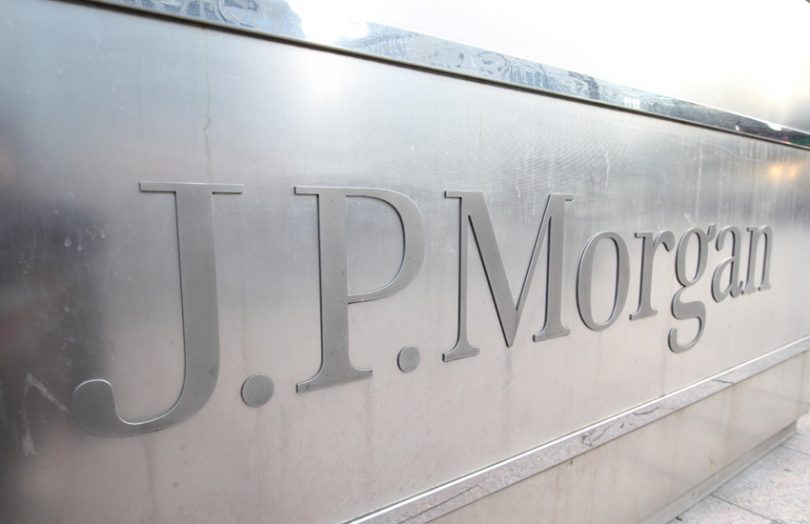Today JP Morgan announced that its Onyx blockchain unit has developed a repo transaction platform. The key differentiator is targeting intraday repo transactions, which blockchain can enable with instantaneous settlement using JPM Coin.
However, Broadridge, which processes repo transactions for 19 of the 24 primary dealers in the U.S., first piloted its DLT Repo platform in 2017. More on that later.
A typical repo transaction happens when banks require short term cash. So they borrow cash by selling securities, often treasuries, and agree to repurchase them at a slightly higher price in the near future. Clearly, the repurchase could also be executed using smart contracts. The average outstanding amount of repos in the U.S. was $2.5 trillion in 2019 according to SIFMA.
Because blockchain enables collateral digitization and instant settlement, it opens up new opportunities for treasurers to manage a bank’s balance sheet intraday. Repos are just one area where this is possible.
“By deploying blockchain, we created new opportunities to streamline operational processes and accelerate settlement for repo,” said Scott Lucas, Head of Markets DLT, J.P. Morgan. “Our new solution will help unlock trapped pockets of liquidity for intraday use and allow for reduced risk profiles for our clients and J.P. Morgan.”
So far, the bank has conducted trials between JP Morgan’s broker deal and the banking entity, and simulated transactions with Goldman Sachs and others, with BNY Mellon acting as triparty agent.
“This is an exciting project which vividly highlights where enterprise blockchain can address a real-world problem in the financial system and we look forward to going live in early 2021,” said Mathew McDermott, Global Head of Digital Assets at Goldman Sachs.
Broadridge’s solution
Meanwhile, Broadridge has validated its solution with a handful of clients contractually committed to its platform, with the first ones going live early next year.
“As a market infrastructure provider, we’re in a great position to deliver a distributed ledger repo platform for the industry’s benefit and bring significant benefits to our clients,” said Horacio Barakat, Broadridge’s Head of DLT Repo Platform.
Outside of intraday transactions, there are still significant advantages to using blockchains, such as eliminating failed transactions and reconciliations. We asked Broadridge what sort of repos its solution supports.
“We are solving for intraday, overnight and term repos. That’s what our clients wanted to solve for. Both on a bilateral basis and an intracompany basis,” said Barakat. “We find that it’s very difficult to solve for one specific pain point and have one set of trades go through one specific platform. So we definitely broadened the use cases to fit our client’s needs.” In other words, having one platform just for intraday transactions might prove inconvenient.
Broadridge is starting with treasury transactions in the U.S., but the platform’s functionality is agnostic to geography and type of security.
While the Broadridge solution doesn’t use cash on ledger, it does enable atomic transactions. Barakat emphasized the key focus is the digitization of collateral, but cash on ledger is desirable.
“Once we as an industry develop cash on ledger that is broadly accepted as a means of payment, it will definitely bring all these platforms to a much better place, because everything will happen on ledger in the same platform,” said Barakat. “Until we have that, the next best thing is for us to trigger payments off the platform through current payment rails that are simultaneous to the change of ownership in collateral.” So, it uses real-time conventional payments to enable delivery versus payment.
Repos are just one element of intraday solutions that are made possible through enterprise blockchain.
Other treasury intraday solutions
London blockchain startup Finteum has been focusing on the intraday market for bank treasurers, particularly FX swaps. CEO Brian Nolan spoke to numerous banks last year and said at the time, “so far they’ve (the banks) told us the financial products they’re most interested in are FX swaps, repos and maybe securities lending, which is very similar to repos.”
On the securities lending side, a major blockchain player in collateral management is HQLAX and its digital collateral registry initiative with the Deutsche Börse. JP Morgan is one of the HQLAX triparty agents, and Goldman Sachs is a participant, although we haven’t confirmed whether Goldman has gone into production yet.
JP Morgan ramps up its blockchain activities
Meanwhile, JP Morgan is accelerating its blockchain and digital currency initiatives. Last month it created the Onyx unit and said it has its first client piloting JPM Coin. This week a wholesale multi-currency payment system with Singapore’s DBS Bank and Temasek was announced. The solution builds on work done as part of Project Ubin, the Monetary Authority of Singapore’s digital currency project.
JP Morgan also revealed that it’s digitizing the bank check clearing process using blockchain, plus it’s interested in servicing the big global e-commerce marketplaces with digital currency and other solutions.
Takis Georgakopoulos, JP Morgan’s Head of Wholesale Payments, said about Onyx that “At some point, it will disrupt the regular way in which we do business.” However, he doesn’t think that’s going to happen soon.






